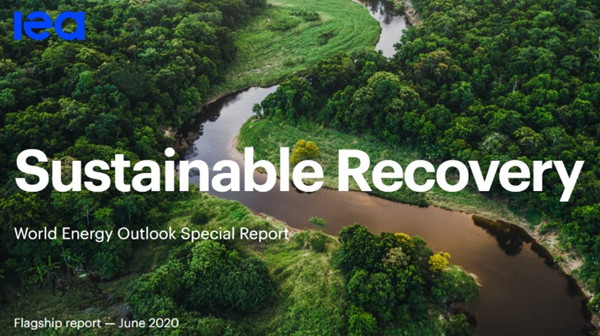Investing in existing nuclear power plants, new nuclear build and supporting innovation in small modular reactors (SMRs) are among measures set out to support a broad range of clean energy technologies in an energy-focused COVID-19 economic recovery plan released on June 18 by the International Energy Agency (IEA). Its emphasis for nuclear investment, however, is on existing plants rather than new power units.

(Image: IEA)
During a press briefing for the launch of the report, IEA Executive Director Fatih Birol addressed a question on new investment in nuclear. "The three major policies that we’re looking at now are: solar and other renewables; energy efficiency improvements in homes, the manufacturing sector and others; and building grids. But in addition to that, many governments in countries that have nuclear plants, especially in the advanced economies, in my view will be extending the lifetime of existing nuclear that can be a very important source of electricity generation, helping us to bring emissions down."
The Paris-based agency says the set of policy actions and targeted investments over the 2021-2023 period it has outlined in its World Energy Outlook Special Report on Sustainable Recovery, can achieve a range of significant outcomes: boost global economic growth by an average of 1.1 percentage points a year; save or create about nine million jobs a year; and reduce global energy-related greenhouse gas emissions by a total of 4.5 billion tonnes.
In addition, the plan would deliver other improvements in human health and well-being, including driving a 5% reduction in air pollution emissions, bringing access to clean-cooking solutions to around 420 million people in low-income countries, and enabling nearly 270 million people to gain access to electricity. Achieving these results would require global investment of about USD1 trillion annually over the next three years, according to the report. This sum represents about 0.7% of current global GDP.
In response to the report, World Nuclear Association Director General Agneta Rising said that, for a sustained transition to a clean energy future, new nuclear plants must play a substantial role. The report underestimates the number of new nuclear power projects ready to start construction, as well as the thousands of supply chain jobs that would be created years before construction would begin on later reactor projects, she said.
"With more than 100 new reactors already planned to be in operation in the 2020s, strong policy support could stimulate hundreds of billions of dollars of investment and tens of thousands of jobs in the supply chain long before construction begins," Rising said.
"In addition to construction, the operation phase of nuclear power plants, lasting 60 years or more, would create a large number of long-term high-skilled jobs that would particularly benefit local communities.
"This acceleration of nuclear new build would support long-term sustainable economic growth, and would make a major contribution to the global nuclear industry’s Harmony goal, which targets 1000 GWe of new nuclear capacity by 2050."
The IEA report confirms that extending the operations of existing nuclear plants will support thousands of jobs and avoid more emissions per GW than other low-carbon options.
Rising said: "Governments' stimulus packages should also accelerate the deployment of new nuclear build, to bring immediate employment and economic benefits through policies aimed at delivering a clean energy future."
The report also says that extending the lifetimes of nuclear power plants "would improve electricity security by lowering the risk of outages, boosting flexibility, reducing losses and helping integrate larger shares of variable renewables such as wind and solar PV". Additionally, extending the operation of existing nuclear plants "would reduce fossil fuel imports, improve electricity security by adding to power system flexibility, and improve the affordability of electricity to consumers".
The IEA also concluded that modernising and upgrading existing nuclear facilities "would avoid a steep decline in low-carbon electricity generation; new construction would further boost low-carbon generation".
The report identifies SMRs as offering the "possibility of providing low-carbon nuclear power with lower initial capital investment and better scalability with the potential to provide a large number of jobs in design, manufacturing, supply and construction activities". The report recommends that governments "provide investment support, foster cost-sharing agreements and supporting regulatory authorities in the validation of innovative safety features and factory assembly”.
Researched and written by World Nuclear News